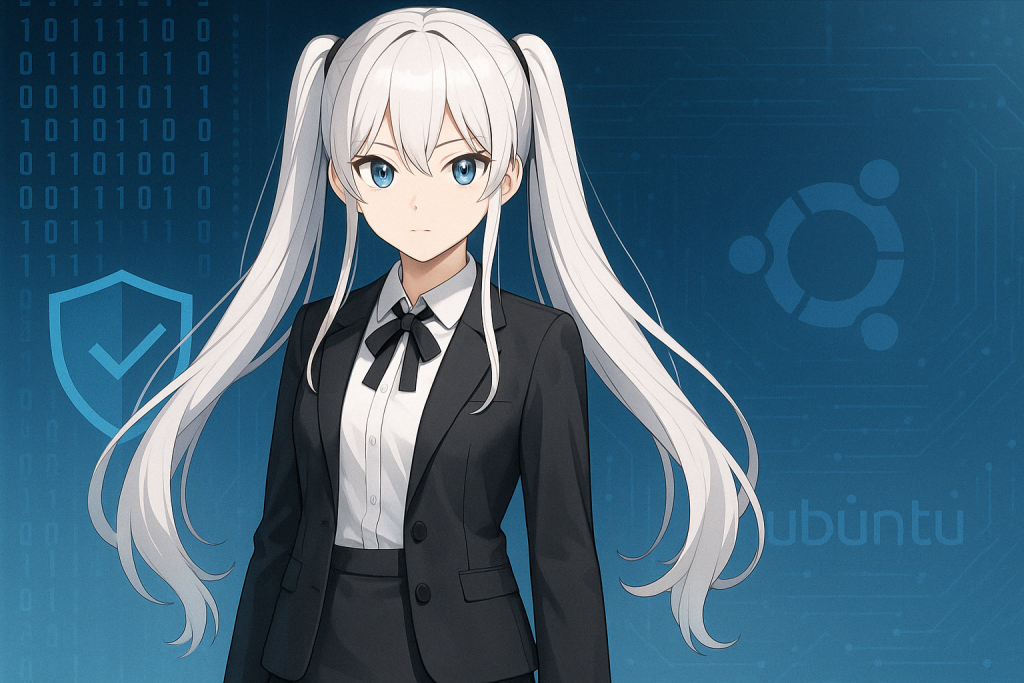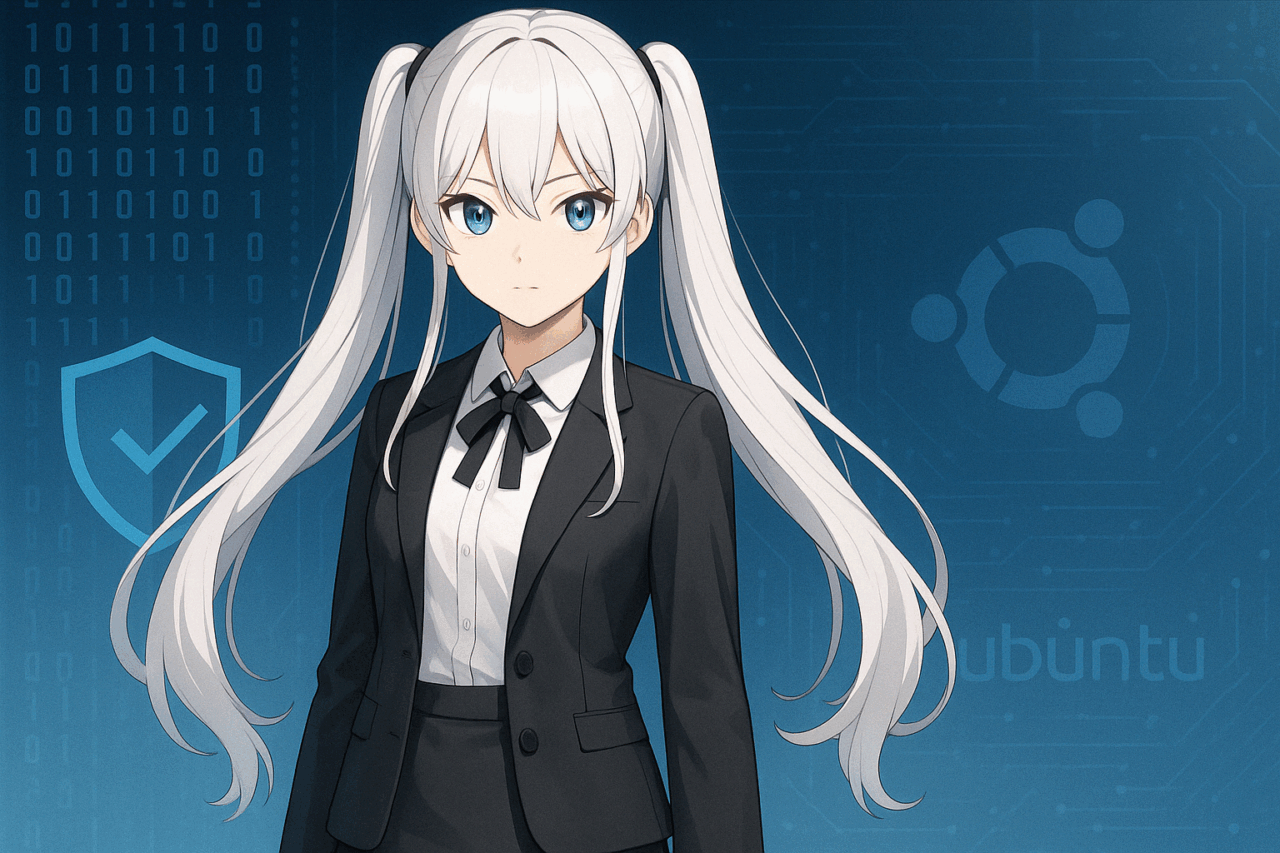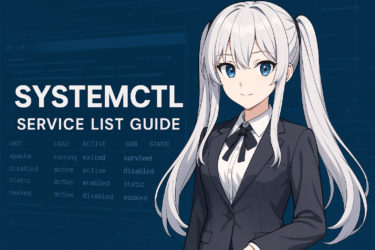- 1 1. Introduction
- 2 2. What Is ClamAV?
- 3 3. Installing ClamAV
- 4 4. Basic Usage of ClamAV
- 5 5. Setting Up Scheduled Scans
- 6 6. Troubleshooting
- 7 7. GUI Frontend: Introducing ClamTk
- 8 8. Conclusion
- 9 FAQ (Frequently Asked Questions)
1. Introduction
Do You Really Need Antivirus Protection on Ubuntu?
Linux is generally considered more secure than Windows, and the risk of virus infection is often believed to be low. However, this does not mean that antivirus protection is unnecessary for Linux distributions such as Ubuntu. In particular, when Ubuntu is used as a file server or mail server, there is a risk of unintentionally spreading Windows-targeted malware to other devices.
In addition, as Ubuntu is increasingly used in diverse environments such as cloud platforms and WSL2 (Windows Subsystem for Linux), the importance of implementing basic virus scanning on Linux has grown significantly.
What Is ClamAV and Why Is It Popular on Ubuntu?
This is where ClamAV comes into play. ClamAV is a free, open-source antivirus software that is well known for its excellent compatibility with Linux environments.
It can be easily installed via Ubuntu’s package management system (APT), and it is designed primarily for command-line operation. Virus scans and virus definition updates can also be automated for regular maintenance.
This article provides a beginner-friendly explanation of how to effectively install and use ClamAV on Ubuntu.
Who This Article Is For and What You Will Learn
This article is intended for:
- Users who work with Ubuntu regularly and are concerned about virus protection
- Those using Ubuntu for server purposes who want to ensure file security
- Anyone interested in installing ClamAV but unsure about configuration and usage
By the end of this guide, you will have a complete understanding of how to install, configure, and operate ClamAV in an Ubuntu environment, allowing you to work with confidence and peace of mind.
2. What Is ClamAV?
Overview of the Open-Source Antivirus ClamAV
ClamAV is a free, open-source antivirus software developed primarily for Unix-based operating systems. It has excellent compatibility with Linux distributions and can be easily installed on Ubuntu using the official package repositories.
The software is mainly designed for scanning email attachments and checking file systems for malware. Despite being lightweight, ClamAV supports a wide range of virus definitions and file formats.
Key Features of ClamAV
ClamAV provides the following features:
- On-demand scanning: Manually scan files and directories at any time
- Automatic virus definition updates: Keeps definitions up to date using
freshclam - Multi-threaded scanning: High-speed scans using the
clamddaemon - Wide file format support: Handles archives, executables, document files, and more
- Email scanning integration: Can be combined with mail servers such as Postfix and Exim
Advantages of Using ClamAV on Ubuntu
The biggest advantage of using ClamAV on Ubuntu is its ease of installation from the official repositories. Simply installing the clamav package via APT allows you to start scanning immediately.
Additionally, automatic updates and cron integration make it easy to set up a regular scanning environment. For servers and business systems, ClamAV is a convenient and reliable way to strengthen security on Ubuntu.
Why ClamAV Is Gaining Attention
In recent years, the number of users running Ubuntu on WSL2 or cloud instances has increased, creating a greater need for reliable security measures. As a result, ClamAV has gained attention as a trusted antivirus solution that runs natively on Ubuntu.
Many users searching for keywords such as “clamav ubuntu” want not only installation steps, but also operational best practices and precautions. In the next section, we will walk through the installation process in detail.
3. Installing ClamAV
Installing ClamAV Packages via APT
On Ubuntu, ClamAV is included in the official APT repositories, allowing you to install it safely without adding external PPAs. Run the following commands in order:
sudo apt update
sudo apt install clamav clamav-daemon -yclamav: Core scanning engine and command-line toolsclamav-daemon: Resident daemon (clamd) for high-speed scanning
This completes the basic ClamAV setup on Ubuntu.
Updating Virus Definitions (freshclam)
After installation, the virus definitions are empty, so updating them is the first essential step. ClamAV uses the freshclam tool to update its virus database.
Run the following commands for the initial update:
sudo systemctl stop clamav-freshclam
sudo freshclam
sudo systemctl start clamav-freshclamclamav-freshclamruns in the background and updates definitions automatically- The service must be temporarily stopped for manual updates
Starting and Enabling the clamd Daemon
Next, start the ClamAV scanning daemon:
sudo systemctl enable clamav-daemon
sudo systemctl start clamav-daemonOnce clamav-daemon is running, you can use clamdscan for faster scans compared to clamscan, making it ideal for regular or large-scale scanning tasks.
Verifying the Installation
You can verify the installation with the following commands:
clamscan --versionsudo systemctl status clamav-daemon- If the version information is displayed, ClamAV is installed correctly
- If the daemon status shows
active (running), background scanning is enabled
Notes for WSL and Cloud Environments
When running Ubuntu on WSL2 or cloud platforms such as AWS or GCP, network restrictions may prevent freshclam from updating properly. In such cases, proxy configuration or manual definition updates may be required.
4. Basic Usage of ClamAV
Two Primary Scanning Methods in ClamAV
ClamAV provides two main scanning methods:
- clamscan: On-demand scanning executed directly (non-daemon)
- clamdscan: High-speed scanning using the
clamav-daemon(daemon-based)
Each method can be selected depending on your use case, and both serve as effective security measures in a “clamav ubuntu” environment.
clamscan: Simple File and Directory Scanning
clamscan is the most basic scanning command. The following example scans an entire home directory:
clamscan -r /home/yourusername- The
-roption enables recursive directory scanning
If a virus is detected, the file path and the message “FOUND” will be displayed.
Commonly Used Options
clamscan -r --bell -i /home/yourusername--bell: Sounds a bell when a threat is detected (if supported by the terminal)-i: Displays only infected files for cleaner output
Files are not deleted automatically, so users must review the results before taking action.
clamdscan: High-Speed Scanning Using the Resident Daemon
clamdscan is available when clamav-daemon is running:
clamdscan /home/yourusernameThis command requests scanning from the already running clamd process, eliminating the need to reload virus definitions each time.
Differences Between clamscan and clamdscan
| Item | clamscan | clamdscan |
|---|---|---|
| Scan speed | Moderate (standalone) | Fast (daemon-based) |
| Ease of use | Works independently | Requires daemon |
| Memory usage | Reloads definitions each run | Efficient with resident daemon |
For occasional manual checks, clamscan is sufficient. For servers or scheduled scans, clamdscan is recommended.
Reviewing Scan Results and Log Files
ClamAV does not automatically generate logs, but output can be redirected:
clamscan -r /home/yourusername > /var/log/clamav/manual_scan.logWhen using clamav-daemon, logs are written to:
/var/log/clamav/clamav.logReviewing these logs allows you to analyze detections and errors later.
Excluding Files and Directories from Scans
To exclude specific files or directories, use the --exclude or --exclude-dir options:
clamscan -r --exclude-dir="^/home/yourusername/.cache" /home/yourusernameRegular expressions can be used for advanced exclusion rules.
Optimizing Scan Efficiency
By choosing between clamscan and clamdscan, you can optimize performance based on workload. For large datasets or recurring scans, clamdscan is strongly recommended.
This flexibility makes ClamAV a well-balanced tool for users searching terms such as “clamav ubuntu scan method,” offering both usability and security.
5. Setting Up Scheduled Scans
Why Regular Virus Scanning Matters
While ClamAV excels at on-demand scanning, maintaining security requires automated, recurring scans. This is especially critical for servers and business environments, where automation ensures comprehensive protection without manual intervention.
Configuring Scheduled Scans with cron
On Ubuntu, scheduled scans are commonly automated using cron. The following example runs a daily scan of the home directory at 1:00 AM and writes the results to a log file.
- Create a scan script:
sudo nano /usr/local/bin/clamav-scan.sh- Add the following content:
#!/bin/bash
SCAN_DIR="/home/yourusername"
LOG_FILE="/var/log/clamav/daily_scan.log"
clamscan -r -i "$SCAN_DIR" >> "$LOG_FILE"Replace yourusername with your actual username.
- Grant execute permission:
sudo chmod +x /usr/local/bin/clamav-scan.sh- Register the cron job:
sudo crontab -eAdd the following line:
0 1 * * * /usr/local/bin/clamav-scan.shThis configuration runs the scan daily and accumulates logs automatically.
Managing and Rotating Log Files
Over time, log files may grow large. For long-term operation, integrating with logrotate is ideal. Alternatively, you can generate date-based logs:
LOG_FILE="/var/log/clamav/daily_scan_$(date +%Y-%m-%d).log"This approach creates a new log file each day for easier tracking.
Customizing Scan Targets and Exclusions
You can change scan targets by modifying SCAN_DIR. Exclusions can be added using:
clamscan -r --exclude-dir="^/home/yourusername/.cache" "$SCAN_DIR"Regular expressions allow for flexible exclusion patterns.
Using clamdscan for Faster Scheduled Scans
If clamd is running, replacing clamscan with clamdscan enables faster scans with lower system load.

Notifications and Error Detection
For advanced monitoring, you can detect the keyword “FOUND” in logs and send notifications:
grep FOUND "$LOG_FILE" && mail -s "ClamAV Detection Report" you@example.com < "$LOG_FILE"This ensures no infections go unnoticed.
6. Troubleshooting
Common ClamAV Issues on Ubuntu and Their Solutions
Although ClamAV is relatively simple, certain issues commonly occur in Ubuntu environments. Below are typical problems and their solutions.
1. freshclam Update Error
Error:
ERROR: /var/log/clamav/freshclam.log is locked by another processCause:
The clamav-freshclam daemon is running in the background.
Solution:
sudo systemctl stop clamav-freshclam
sudo freshclam
sudo systemctl start clamav-freshclam2. clamav-daemon Fails to Start
Error:
Job for clamav-daemon.service failed because the control process exited with error code.Causes:
- Incorrect permissions on
/var/lib/clamav - Corrupted virus definition files
- Insufficient system memory
Solution:
sudo systemctl stop clamav-freshclam clamav-daemon
sudo rm /var/lib/clamav/*.cvd
sudo freshclam
sudo systemctl start clamav-daemonsudo chown clamav:clamav /var/lib/clamav7. GUI Frontend: Introducing ClamTk
What Is ClamTk?
ClamTk is a graphical user interface (GUI) frontend for ClamAV.
It is designed primarily for Linux desktop users, allowing intuitive virus scanning without requiring familiarity with command-line operations.
ClamTk can be easily installed from Ubuntu’s official repositories and is a popular option for users who search for “clamav ubuntu” and want a GUI-based solution.
Installing ClamTk on Ubuntu
ClamTk is available in the official Ubuntu repositories and can be installed with the following commands:
sudo apt update
sudo apt install clamtk -yNote: The ClamAV core packages (clamav, clamav-daemon) must already be installed.
After installation, you can launch ClamTk by searching for “ClamTk” in the application menu.
Basic Usage of ClamTk
When you launch ClamTk, you will see the following main features:
- Scan (Scan a directory / Scan a file)
→ Select folders or files via the GUI and start scanning easily. - History
→ View past scan results in chronological order. - Settings
→ Configure scan exclusions and scheduled scan behavior. - Update
→ Manually update virus definitions usingfreshclam.
Advantages and Limitations of ClamTk
Advantages:
- No need to remember command-line syntax
- Clear and visual interface that reduces user error
- Supports drag-and-drop file selection
Limitations:
- Does not support
clamdscan(daemon-based high-speed scanning) - Scheduled scans often rely on
cronrather than GUI-only configuration - Less efficient for large-scale or bulk scanning
In summary, ClamTk is excellent for light scanning and beginner users, but command-line tools are better suited for large-scale or production environments.
Who Should Use ClamTk?
- Linux beginners using Ubuntu for the first time
- Desktop users who want quick, occasional virus checks
- Users who prefer a safe and visual antivirus interface
For users searching keywords such as “clamav ubuntu GUI” or “clamtk usage,” ClamTk provides valuable and accessible security options.
8. Conclusion
Virus Protection on Ubuntu: Better Safe Than Sorry
Linux is often considered a secure operating system. However, the growing presence of cross-platform malware, expanded server usage, and environments such as WSL2 have increased the importance of antivirus protection even on Ubuntu.
In this context, ClamAV stands out as a powerful, free, and open-source antivirus solution suitable for both personal and professional use.
What This Article Covered
This guide addressed common search needs for “clamav ubuntu” and covered:
- The basics of ClamAV and its compatibility with Ubuntu
- Installation steps and initial configuration
- Command-line scanning methods (
clamscan/clamdscan) - Automating scans with cron
- Common errors and troubleshooting techniques
- Using the GUI tool ClamTk
Operational Best Practices Matter
Installing ClamAV alone is not enough. Effective security depends on scheduled scans, proper log management, and careful handling of false positives. These practices are especially important for servers and technical users, but they also help desktop users maintain better security awareness.
Getting Started Today
- Install
clamavandclamav-daemonvia APT - Update virus definitions using
freshclam - Test manual scans with
clamscanorclamdscan - Automate scans with cron and explore GUI usage with ClamTk
Following these steps will help you establish reliable antivirus protection on Ubuntu.
Because Ubuntu is a flexible and open platform, using open tools like ClamAV and taking a proactive approach to security is essential. We hope this guide helps you build a safer Ubuntu environment.
FAQ (Frequently Asked Questions)
Q1. Does ClamAV support real-time scanning?
A1.
ClamAV does not provide real-time scanning by default. However, by combining clamd with clamonacc, basic real-time scanning using inotify is possible. This feature is considered supplementary and differs from full real-time protection offered by commercial antivirus software. For server environments, scheduled scans via cron are commonly used instead.
Q2. Does ClamAV automatically delete detected viruses?
A2.
No. ClamAV does not delete infected files by default to reduce the risk of false positives.
You can enable automatic removal with the following option:
clamscan -r --remove=yes /home/yourusernameIt is strongly recommended to review scan results carefully before enabling automatic deletion.
Q3. Can ClamAV detect Windows malware?
A3.
Yes. ClamAV can detect malware designed for Windows environments.
This is particularly useful when Ubuntu is used as a file server, helping prevent the distribution of infected files to Windows clients—even if Ubuntu itself is not directly affected.
Q4. What Is the Difference Between ClamTk and ClamAV?
A4.
ClamTk is a GUI frontend for ClamAV that allows ClamAV operations to be performed visually. While it uses the same scanning engine, ClamTk has functional limitations such as lack of clamdscan support.
ClamTk is ideal for beginners, while advanced users and automated environments benefit from direct ClamAV usage.
Q5. Does ClamAV work on all Ubuntu versions?
A5.
ClamAV generally works on all officially supported Ubuntu versions, including LTS releases. However, older Ubuntu versions may include outdated ClamAV packages, which can cause issues with virus definition updates. Using a recent Ubuntu release is recommended.
Q6. Where are ClamAV scan logs stored?
A6.
The clamscan command does not automatically save logs, but output can be redirected manually:
clamscan -r /home/yourusername > /var/log/clamav/manual_scan.logWhen using clamav-daemon, logs are stored at:
/var/log/clamav/clamav.logReviewing these logs allows you to analyze detections and errors after scans.



